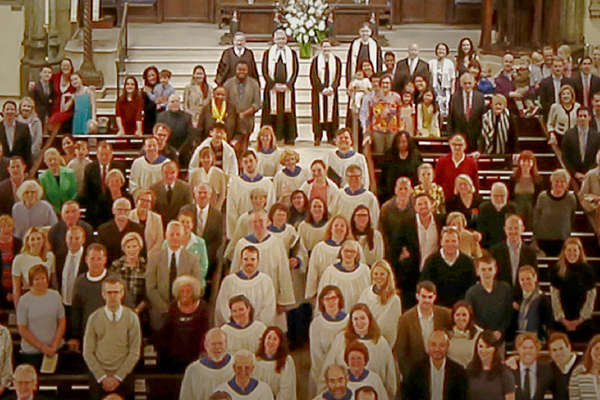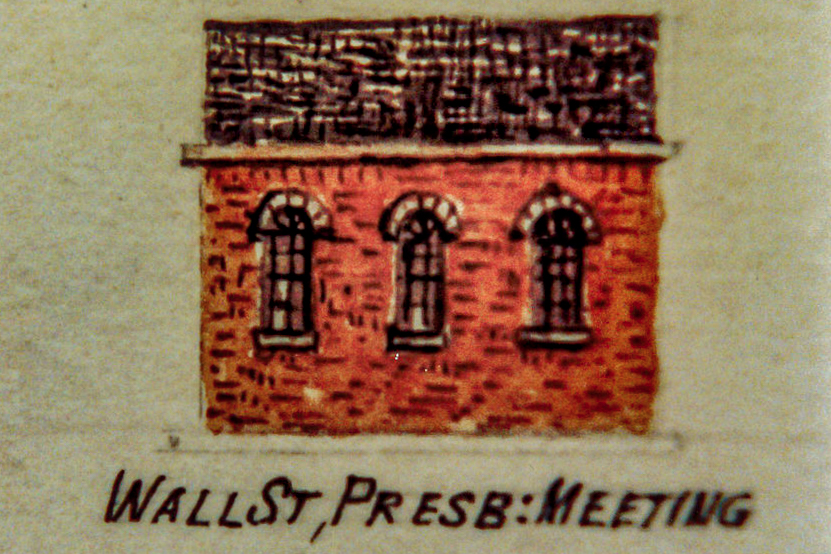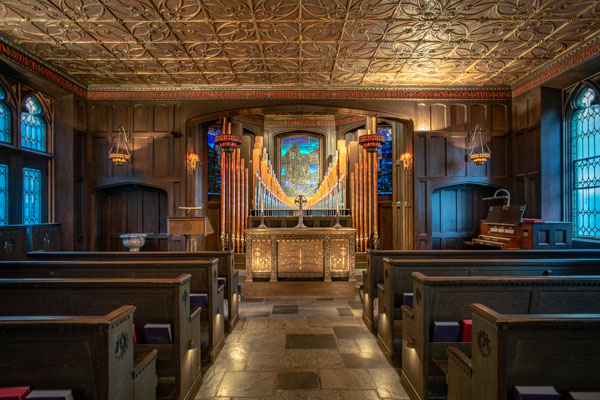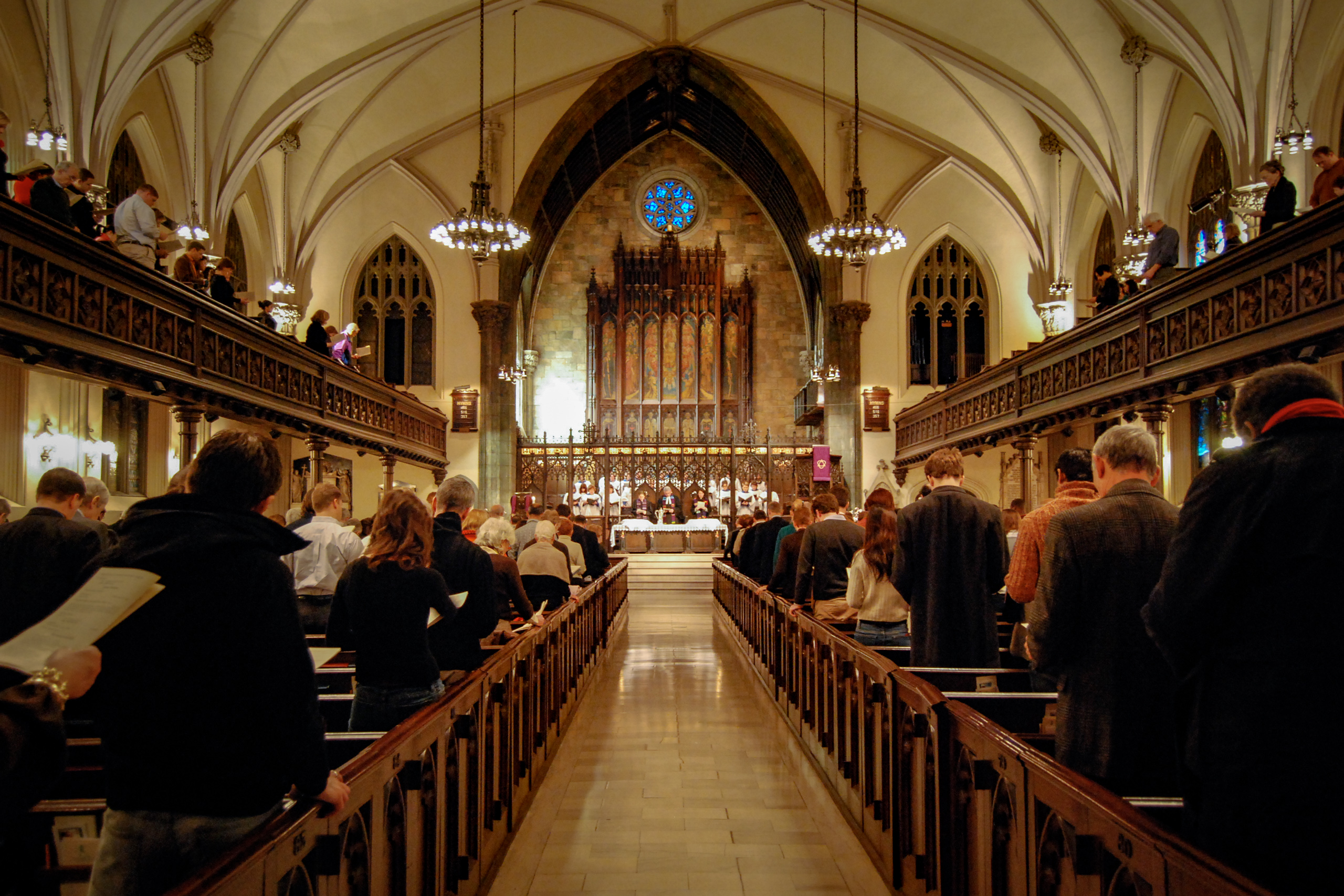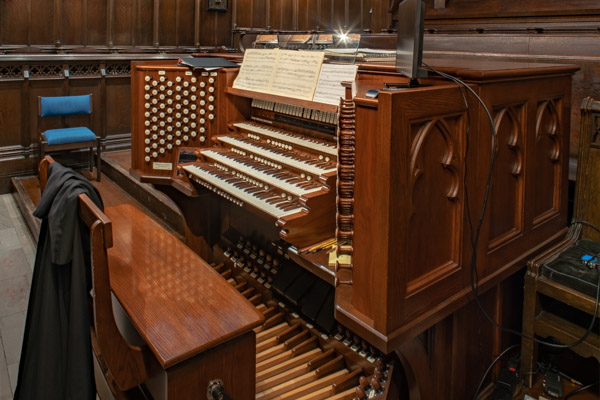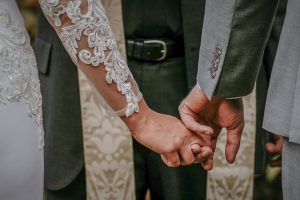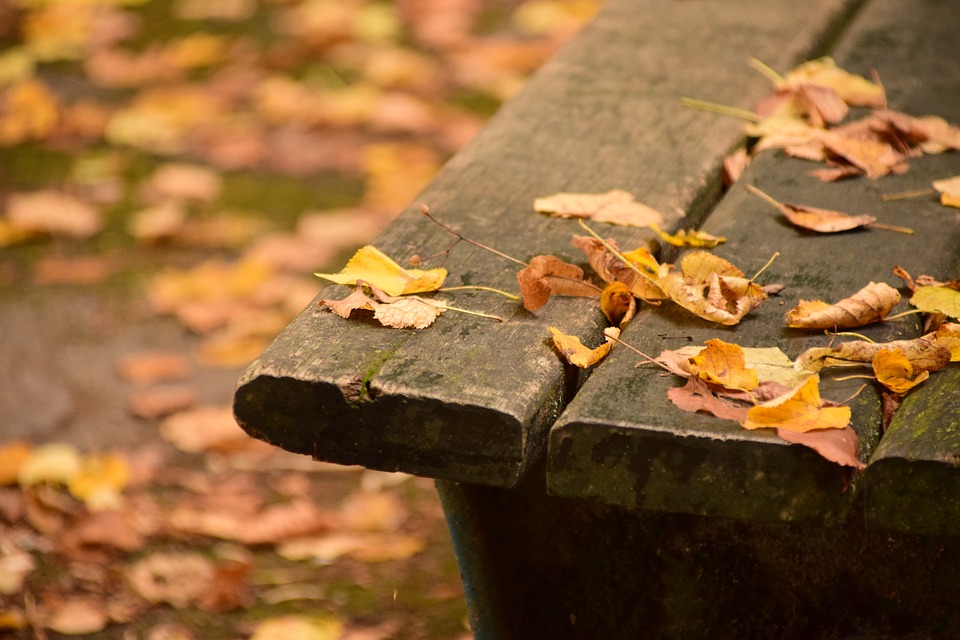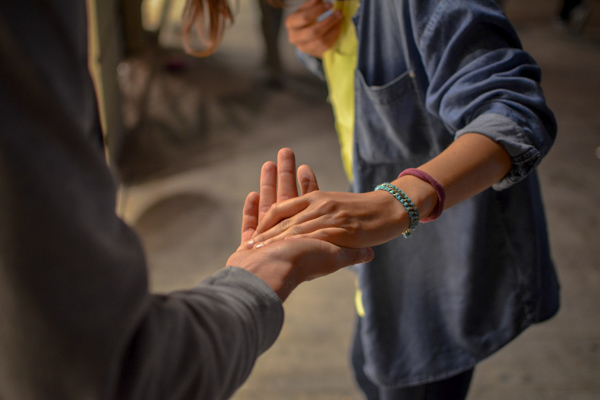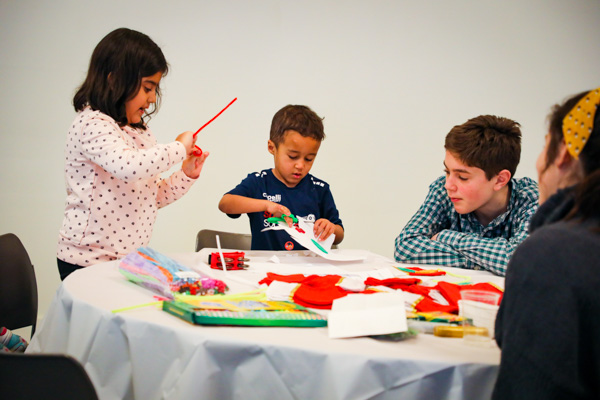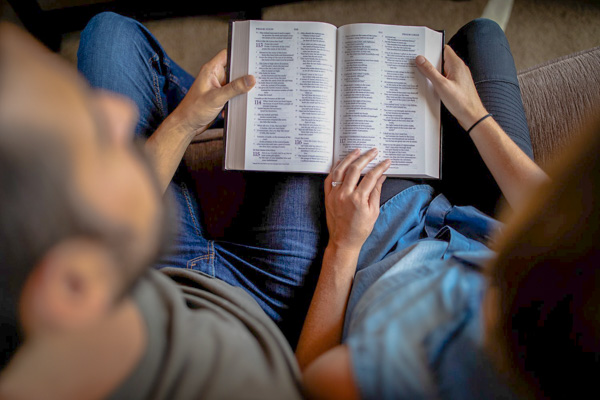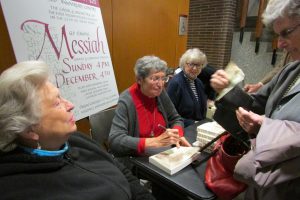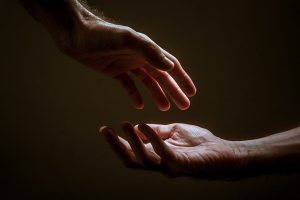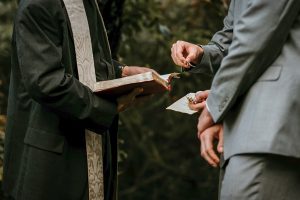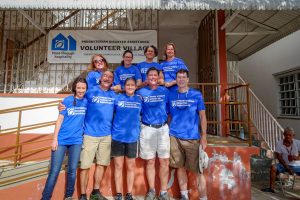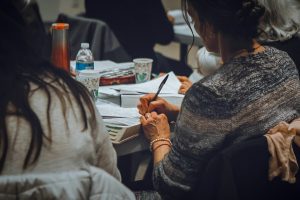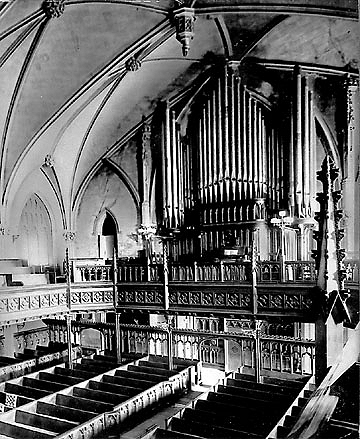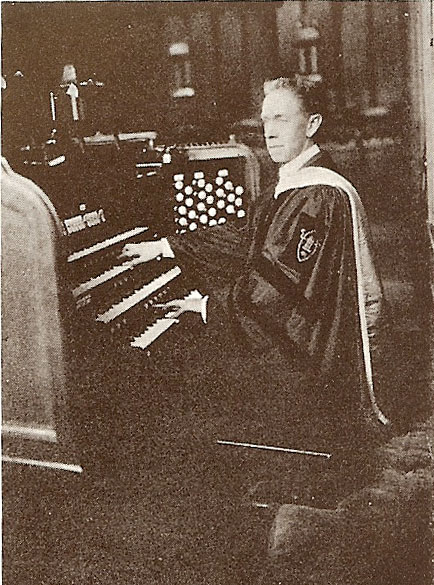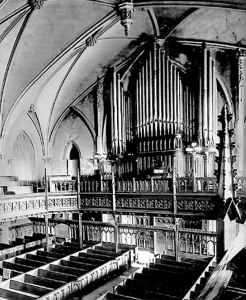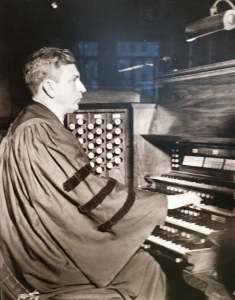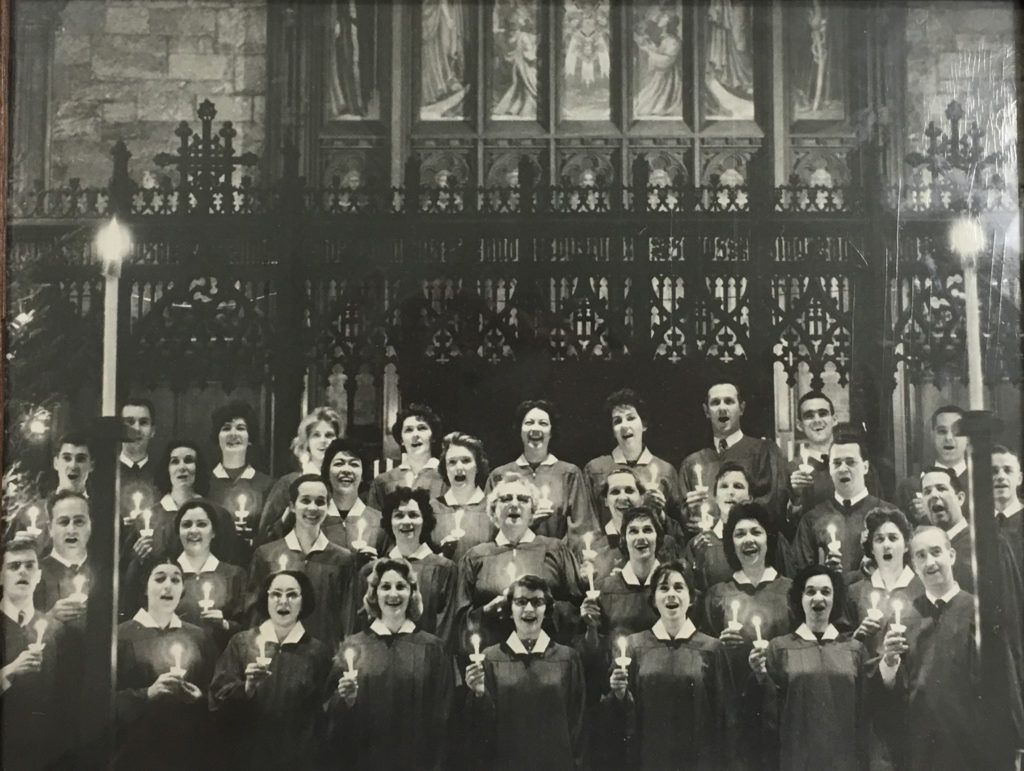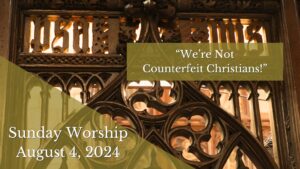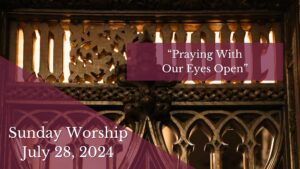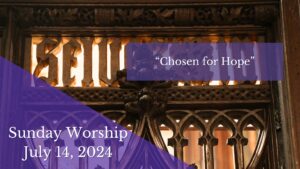Drawing on a rich tradition, our music program has been recognized as one of the finest in New York City.
Music History
Music at First Church has moved from cause for discord to source of harmony and strength. Today’s worshipers might argue with the old traditionalists: One of the “important things heard in the house of God” is the sound of music.
Expand All | Collapse All
In the early years of First Church, music sometimes provided more discord than harmony for the worshipers. It was an inauspicious birth for the exhilarating music that fills First Church today.
Until the mid-18th century, the sole music permitted was the singing of psalms a cappella from an “Old Scots” psalm book. In 1748, when the church’s liberal trustees voted to substitute Isaac Watts’s hymnal (including such familiar hymns as “O God, Our Help in Ages Past” and “Joy to the World”), traditionalists in the congregation were outraged. The argument was decided in favor of the Watts version, with a caution against the singing of anthems on The Lord’s Day, which might distract worshipers from “the important things heard in the house of God.”
A group of disappointed traditionalists withdrew and formed their own congregation on Cedar Street which grew into Fifth Avenue Presbyterian. No wonder music remained a mere footnote in the annals of First Presbyterian for nearly a century!
By the time the church moved into its current building in 1846, hymns were somewhat more welcome and music leadership rested with a quartet of singers who relied on a pitch pipe because no musical instruments were permitted in the sanctuary.
In 1855, the liberal movers again began nipping at the heels of the traditionalists. Trustees proposed installing a pipe organ, thinking it might “attract young people and strangers to the services.” But James Lenox, scion of the influential family of Lenox Hill, leading elder and largest financial contributor to the church, had no use for such sinister innovations. So it was not until 1886, six years after Lenox’s death, that an organ was finally installed.
William C. Carl became the church’s first organist in 1892. He quickly instituted a full music program and recruited a choir to back a professional quartet. Carl’s Motet Choir, recitals, and Sunday evening oratorios drew audiences of more than a thousand.
A succession of distinguished musicians followed William Carl. First was Willard Nevins, a music columnist for the New York World Telegram, who took over after Carl’s death in 1936 and remained until 1957. John Huston, formerly of Holy Trinity in Brooklyn and Temple Emanu-El, was at First Church from 1957 until 1975. He was followed by Robert Baker, former dean of Union Seminary’s School of Sacred Music and Professor of Organ at Yale. On Dr. Baker’s retirement in 1988, a former student of his, Dr. William F. Entriken, left neighboring St. Luke’s to become First Church’s organist and choirmaster. Dr. Entriken retired after thirty years of service in 2018 and holds the titled of Organist and Choirmaster Emeritus. Our new Director of Music and Organist, Michael Shake, was welcomed in September 2019.
Music at First Church has moved from cause for discord to source of harmony and strength. Today’s worshipers might argue with the old traditionalists: One of the “important things heard in the house of God” is the sound of music.
The Guilmant Organ School was one of the first accredited schools in America devoted to teaching organists and church musicians. Learn about the history of this pioneering era.
Immediately after his appointment in March of 1892, Carl began a series of organ recitals that were so successful that the church was filled to capacity at most concerts and the police had to control the crowds on Fifth Avenue.
As more churches were built in the latter part of the 19th century, the number of organ builders in America increased to meet the need for musical instruments, and many ne instruments like the Roosevelt Organ at First Church were built. However, there was a lack of well-trained organists to play these new, impressive looking and sounding instruments. While recently established music conservatories and schools in America taught some organ, the serious student traveled to France and Germany for training. William C. Carl, like many American students, went to Paris to study with Alexandre Guilmant and the two became life-long friends. Guilmant (1837-1911) came from a long line of organists and was not only known as a great teacher, but also as an organ virtuoso and church musician.
Guilmant toured America three times, performing in major churches and concert halls, and played forty recitals at the St. Louis 1904 Exposition. Since the American public had never heard or seen organ playing like this, Guilmant immediately became a celebrity. He performed several times at First Presbyterian, and Walter Damrosch referred to him as “a wizard of the organ.” When he played a passage with his feet alone, the audience was wild with excitement. Guilmant was organist at La Trinité, Paris, and taught at the Paris Conservatory. In 1894, he founded, along with other colleagues, the Schola Cantorum in Paris, a school for training church musicians. Guilmant’s stylized playing is best described as having a singing, clean, legato line. His method of teaching was revered, and he paid close attention not only to organ playing technique but to the poetry of the music as well. Guilmant was a prolific composer, and his wife ran the family publishing business. In 1898, during Guilmant’s second American tour, Carl and Guilmant decided to open a school for organ instruction in New York based on the master’s method of teaching.
In 1899, Dr. Duffield invited the Guilmant Organ School to open at First Presbyterian Church with the magnificent Roosevelt Organ as the centerpiece for lessons and recitals. The first class was held on October 9, 1899, in the chapel.
Guilmant was the President, Carl was the Director and Instructor of Organ, and Dr. Duffield was the Chaplain and Instructor in Theology. The following excerpt from the initial announcement gives a clear idea of the purposes of the school: William C. Carl having been authorized by Alexandre Guilmant to open an organ school under his patronage begs to announce the Guilmant Organ School, in which the method as set forth by the great French organist will be taught. Since the phenomenal success of M. Guilmant in America, a new impetus has been given to the organ as a solo instrument and in its relation to the church service. Organists in all parts of the country are giving more attention to its study and in the preparation of their work. Organ concerts are in demand with a growing success. Church committees are exacting a higher degree of ability from their organists and the press is giving it attention. These facts have demonstrated to Mr. Carl the necessity of such a school, where the organist will receive a practical training for the church service and a more thorough understanding of the ecclesiastical music.
The Guilmant Organ School at First Presbyterian Church quickly became one of the leading institutions for the study of organ and church music in America.
The school awarded a diploma after two years of study, and courses were offered in private organ instruction, general music studies, and theology. A silver and gold medal designed by Tiffany was awarded to the graduate of each class with top honors. In 1915, six scholarships were established, so that students from across America could study at the school. Through the years, Carl and the Guilmant Organ School gained international recognition. The French government bestowed on him the Officer de l’Instruction Publique, and he was made a Chevalier of the Legion of Honor in recognition for his work in promoting the works of Guilmant and other French composers. New York University conferred on him an honorary Music Doctorate Degree. The 25th anniversary of the Guilmant School was celebrated in 1924. One hundred and fifty students had graduated from the school, and 26 of them were in responsible positions in the greater New York area. To celebrate Carl’s 40th anniversary as Organist at First Church in 1932, the church installed a bronze plaque in the choir. In 1935, Carl was granted a leave of absence from his duties at the school for health reasons, and Willard Irving Nevins, Carl’s first student and associate, became director of the school. On December 8, 1936, Carl died and in January 1937, Mr. Nevins was appointed Organist and Choirmaster of First Church. Under Mr. Nevins, the school continued its fine service in the field of church music.
With a view toward solidifying the position of the school in the education scene, Mr. Nevins arranged for incorporation of the institution, in 1940, under the laws of the State of New York. The school was later approved under the regulations of the University of the State of New York, in order that colleges could give credit for work done in the school. In 1956, Willard Nevins retired as Organist and Choirmaster at First Church, but remained director of the school until his death in 1962. On January 18, 1960, the school celebrated its 60th anniversary, and a gala dinner was held in the newly built Church House (now the Mellin-Macnab Church House). In March 1963, Dr. George Markey, Organist and Choirmaster of Madison Avenue Presbyterian Church, became the third director. At this time, the school left First Church. Dr. Markey’s dream was to recast and update the school in order to compete with major American music conservatories. The school continued to receive much attention when, in 1965, the Guilmant Organ Festival was held on the new Aeolian-Skinner Organ in Philharmonic Hall, Lincoln Center. However, after leaving First Church, the school never found a permanent home, and closed in the early 1970s. The Guilmant Organ School was an institution with high standards that successfully trained young organists to go forth and serve congregations throughout America. One hundred years ago, the congregation of First Church made a commitment to the educational development of church musicians in America, and many students learned to play and refine the art of organ performance in the church’s sanctuary. Today, graduates of the school speak fondly of the time they spent studying at the school and First Church. In the 21st century, it is important to remember and give thanks for the strong witness of the forebears of this congregation, a congregation that began over 300 years ago.

